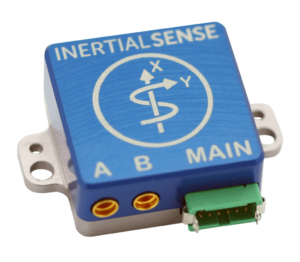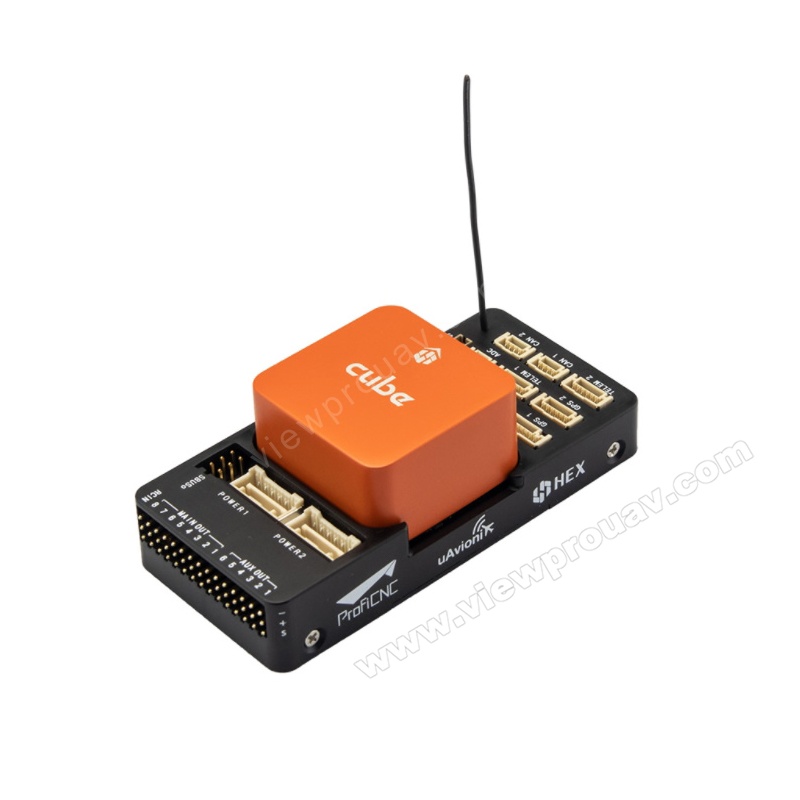SparkNavi Drone Flight Controller and GNSS/INS Made in Taiwan: Accuracy Navigating for Drones
SparkNavi Drone Flight Controller and GNSS/INS Made in Taiwan: Accuracy Navigating for Drones
Blog Article
Discovering the Duty of Drone Flight Controllers in Enhancing Trip Stability and Navigating Effectiveness
The innovation of drone technology has actually substantially raised the relevance of flight controllers, which serve as the brain of these aerial vehicles. By integrating real-time information from a variety of sensing units, flight controllers boost flight stability and navigation effectiveness, making certain that drones can run smoothly even in complicated atmospheres.

Recognizing Trip Controllers
Flight controllers are essential elements in the performance of drones, working as the minds that take care of and maintain flight procedures. These advanced gadgets procedure information from numerous sensors, including accelerometers, gyroscopes, and GPS, to ensure that the drone maintains its intended flight course. The trip controller interprets this data and carries out commands based on pre-defined algorithms, enabling the drone to react to ecological changes, such as wind or challenges.
The main function of a trip controller is to keep stability during flight. It attains this by making real-time changes to the drone's electric motors and control surfaces, guaranteeing equilibrium and control. Furthermore, contemporary flight controllers incorporate advanced attributes such as waypoint navigating, enabling automated flight paths and improved operational performance.
Understanding the style of trip controllers is crucial for both professionals and enthusiasts. They typically include a microcontroller, firmware, and different user interfaces for sensor input and communication. As modern technology developments, flight controllers have actually ended up being a lot more small and capable, incorporating synthetic knowledge to adjust and improve decision-making procedures to complex trip circumstances. This advancement represents a pivotal advancement in the drone sector, leading the way for extra innovative applications and safer procedures.
Key Parts of Trip Stability
Accomplishing ideal flight security in drones counts on several essential parts that operate in concert to make certain smooth and controlled procedures. Central to this security is the trip controller itself, which processes data from numerous sensors to preserve the preferred flight mindset. This consists of accelerometers and gyroscopes that gauge movement and orientation, allowing for real-time modifications to the drone's setting.
One more essential component is the electronic rate controllers (ESCs), which control the power supplied to the electric motors. By carefully adjusting electric motor speeds in response to flight controller commands, ESCs help preserve balance and neutralize disruptions triggered by wind or sudden motions.
Furthermore, the style of the drone's frame plays a pivotal function in flight stability. A well-structured frame lessens resonances and enhances the general wind resistant profile, adding to smoother trip features. Finally, the integration of innovative algorithms within the flight controller aids in anticipating adjustments, making certain a responsive and versatile trip experience.
With each other, these elements create a cohesive system that enhances a drone's stability, enabling accurate maneuvering and boosted efficiency in various trip problems.
Navigating Effectiveness Techniques
Performance in navigating is necessary for enhancing drone operations, specifically in complicated environments. Reliable navigation strategies boost the capability of drones to go across tough surfaces and prevent barriers, thereby enhancing operational efficiency and security.
One popular strategy is the application of sophisticated general practitioners and inertial dimension systems (IMUs) that provide precise place tracking and positioning information. These technologies allow drones to compute optimum flight paths in real-time, considering various elements such as wind problems and potential obstacles.
One more technique includes making use of algorithms for path preparation and optimization. Formulas such as A * and Dijkstra's algorithm can be deployed to determine the most efficient route while lessening energy usage and trip time. Incorporating device discovering versions can make it possible for drones to adaptively find out from their settings, boosting navigating capacities through experience.

Influence On Autonomous Drones
The integration of innovative navigation techniques has exceptionally transformed the capabilities of self-governing drones, enabling them to operate with better freedom and precision. SparkNavi drone flight controller and GNSS/INS made in taiwan. These enhancements are primarily associated to sophisticated trip controllers that use real-time data handling and sensing unit fusion, permitting drones to navigate complex settings seamlessly
The influence on autonomous drones extends past plain navigation; it encompasses enhanced obstacle avoidance, boosted security during vibrant conditions, and enhanced goal integrity. By leveraging algorithms that include maker discovering and man-made knowledge, drones can adapt to changing circumstances, making educated choices that enhance their flight courses while decreasing threats.
Additionally, the application of robust trip controllers has promoted the implementation of complex jobs, such as airborne assessments, delivery solutions, discover here and agricultural surveillance, with very little human intervention. This capacity not just improves procedures yet likewise decreases human mistake, thus enhancing general safety.
Because of this, the functional scope of independent drones has increased substantially, making them important devices in different sectors. Their capability to execute effectively in varied scenarios emphasizes the vital role that progressed trip controllers play fit the future of unmanned aerial systems.
Future Patterns in Trip Control
Frequently, innovations in trip control technology are positioned to redefine the landscape of drone procedures in the coming years. Emerging patterns show a significant shift towards improved fabricated intelligence (AI) combination, allowing trip controllers to process real-time data a lot more efficiently. This development will certainly promote improved decision-making abilities, enabling drones to adjust to vibrant environmental conditions autonomously.
Furthermore, the application of equipment learning algorithms is expected to improve anticipating upkeep, therefore minimizing downtime and extending the lifecycle of drone components. This positive technique to upkeep will be vital as drone applications broaden throughout different markets, from agriculture to logistics.

.png)
Lastly, improvements in protected interaction procedures will deal with security and governing problems, ensuring that drones can operate effortlessly in stuffed airspaces (SparkNavi drone flight controller and GNSS/INS made in taiwan). Jointly, these fads direct towards a future where flight control systems are not only smarter and more efficient but additionally qualified of running securely in a progressively integrated airspace
Final Thought
To conclude, drone trip controllers are indispensable to enhancing flight security and navigating effectiveness via the innovative processing of sensor data. By preserving optimal flight perspectives and using advanced algorithms for path optimization and challenge evasion, these controllers significantly add to the freedom and operational safety of drones. As technology remains to progress, additionally innovations in flight control systems are expected, assuring better efficiency and increased capacities in the world of unmanned aerial automobiles.
By incorporating real-time data from a range of sensors, flight controllers enhance flight stability and navigating performance, read the full info here ensuring that drones can operate smoothly also in intricate settings.Trip controllers are important elements in the performance of drones, serving as the brains that maintain and handle flight procedures. In addition, modern-day trip controllers incorporate sophisticated functions such as waypoint navigation, allowing for automated trip paths and enhanced functional efficiency.
Central to this stability is the trip controller itself, which processes information from various sensing units to maintain the preferred flight check perspective.In verdict, drone trip controllers are integral to enhancing trip stability and navigation performance with the sophisticated processing of sensing unit information.
Report this page